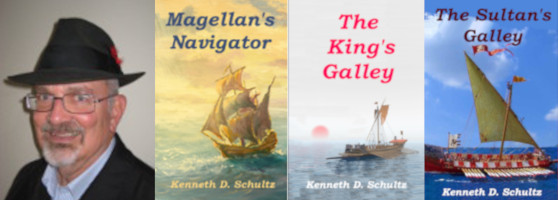The Victoria, the sole remaining ship of Magellan’s fleet, limped, battered and leaking, into San Lúcar harbor, Spain, on September 6, 1522. When sold, the cloves in its hold would pay for most the cost of Magellan’s five ships that departed three years earlier with so much pomp. Hence the immediate financial return to Magellan’s investors was at best a wash. Is that enough to declare the expedition a failure? How should we judge Magellan’s success?
Judging strictly on Magellan’s charter from Spain’s King Charles, the expedition was largely a failure. He promised to find a passage around South America and open a trade route to the Spice Islands of the East Indies. While doing this he was encouraged to claim new lands for Spain and to convert pagans to Christianity.
Magellan did discover a strait around South America, but it proved too far south and difficult for commercial passage until the fast clipper ships three hundred years later came into being. Magellan also did ‘discover’ (at least for Europeans) the many islands of the Philippines, although he managed to get himself killed in the process. His crew later did later find the Spice Islands and load a rich cargo there, although of the two ships remaining, only the Victoria made it back to Spain. Hence, based upon Magellan’s charter, the expedition was a failure.
I believe the problem with evaluating the success of voyages in the Age of Exploration is that their benefits most often occurred years after their date. Spain benefited enormously from Columbus’ discovery of the New World, but the dollar impact didn’t occur until thirty or forty years later when the silver from Mexico and Peru made Spain an empire, and not merely a kingdom. Similarly, the real benefit of Magellan’s discoveries didn’t accrue to Spain until it conquered the Philippines forty years later. Some immediate financial benefit did occur when Portugal agreed in 1529 to pay Spain 350,000 ducats for the Spice Islands as part of the Treaty of Zaragoza.
Perhaps Magellan’s greatest, and unintended, contribution to the understanding of the world was his proof that the Pacific Ocean was far, far more immense and the world’s circumference hence larger than previously believed. In the long run Spain was richly rewarded by Magellan’s discoveries. But what about the human cost? Two hundred and thirty-nine men and boys originally sailed on the fleet. Only eighteen Europeans remained alive on the Victoria when it arrived back in Spain. But those numbers don’t tell the entire tale of human misery. Read more about this in tomorrow’s blog.
